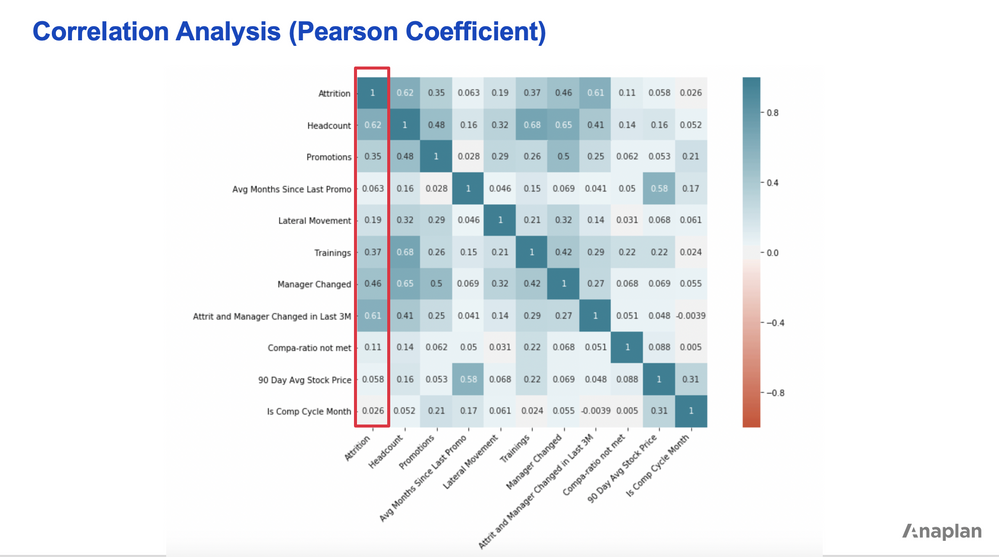
How many versions of headcount reports and forecasts do you have around your company? Like many organizations, the Finance and HR teams at Anaplan had two independent headcount forecasts based on the teams’ priorities, and at times, those forecasts did not align. The projected headcount reflected the perspective of each group, which resulted in discrepancies that took time to reconcile and true-up. HR’s focus on opening and filling requisitions in a timely manner aligned with the people strategy, while FP&A’s concern with headcount and cost projections adhered to the business’s financial targets.
Ongoing, clear communication and collaboration are at the foundation of any strong partnership. By design, we — HR and Finance at Anaplan — forged a close working relationship that spurred the discovery of our mutual goal to efficiently forecast headcount. But before a solution could be developed, we needed to understand the complexity of one another's processes and business priorities. We created a strategic roadmap to unify our shared goals, including incorporating predictive modeling, that moved us closer to alignment on the overall headcount projection. Through the initiative, we analyzed our headcount trend data and uncovered attrition forecasting as a driving factor for the misalignment of our ending headcount projections.
 Figure 1 Running List of Finance x HR Connects for Roadmap
Figure 1 Running List of Finance x HR Connects for Roadmap
Defining the challenge—coming to an agreement on attrition calculations
To agree on how we forecasted our attrition numbers, we first had to be confident that our historical numbers aligned, and for that, we had established a process that leveraged Anaplan to verify and flag irregularities. Forecasting attrition required an understanding of how attrition estimates were calculated and why. To meet headcount goals, estimating attrition by function and location and accounting for seasonality have been priorities to ensure job requisitions are opened timely so as not to disrupt productivity while being mindful of budget constraints. With turnover on the rise (as experienced by many organizations), we had to refine HR’s goal to be more proactive and hire ahead and within the budgetary guidance driven by Finance.
Our ability to leverage best-in-class technology was essential to frame the conversation, and with Anaplan, we got access to real-time data effortlessly and were able to analyze and compare Finance and HR’s attrition forecast methodologies. With these insights, we were able to make adjustments to better track our projections in the moment and visualize data using dashboards while we analyzed trends and historical data for correlation and evaluated past efforts. The insights uncovered through our analysis led us to explore Anaplan PlanIQ capabilities to perform statistical analysis and forecasting that leverages powerful, integrated artificial intelligence and machine learning. The results obtained from PlanIQ were easily integrated into our existing Anaplan HR and finance models, which we then compared to our historic and current projections and actuals.
Finding a solution—leveraging PlanIQ to improve forecasting accuracy
Forecasting with PlanIQ is an iterative process. Over the course of a couple of months, we fine-tuned PlanIQ by bringing in additional internal and external data sources, such as employee training records, employee movement transactions, and US Bureau of Labor Statistics (BLS) data as we trained the model. While there is a slight learning curve, new data uploads typically take less than an hour. Before uploading new data, we analyzed the data using Pearson’s correlation in Python to test relationships between variables, like Anaplan stock price and BLS JOLTs data. Running PlanIQ with the related variables, we compared different algorithms, such as Anaplan AutoML, Prophet, and Arima, etc., within one module and used dashboards to visualize the results before selecting the best-fit forecast. Collaboration was critical to ensuring that we incorporated the operational organizational drivers for Finance and HR. The culmination of our efforts resulted in a common forecast projection that HR and Finance now leverage to efficiently meet their headcount objectives.
 Figure 2 Pearson Correlation Analysis (analysis conducted in Python)
Figure 2 Pearson Correlation Analysis (analysis conducted in Python)
Looking toward the future
Our success was powered by Connected Planning — enabled by Anaplan and PlanIQ — to transform a multi-step process that normally took 5-10 days into a reliable automated process with real-time results which takes minimal time. We have a standing month-end meeting to share insights, where we true-up any nuances and discuss next steps. As we progress in our headcount alignment journey, we will continue to refine our attrition analysis and evaluate related data and attributes that can enhance the accuracy of our forecast.
With Anaplan, we have Connected Planning at our fingertips. Data from HR and Finance systems, business operations, as well as external data sources are integrated for increased transparency and access to real-time insights. Combined with the power of PlanIQ to generate forecasts using machine learning, we have a unifying solution that aligns fundamentally distinct approaches for a data-driven headcount projection.
 Figure 3 PlanIQ Management Reporting View (Demo View)
Figure 3 PlanIQ Management Reporting View (Demo View)
Lessons learned
- Take time to understand the complexity of your current processes, including business needs and impact. Learn why a process is defined a certain way, what are the key drivers, and who is (and who should be) involved.
- Be agile — be prepared to pivot and change with key priorities in mind. PlanIQ is an iterative process; experiment and test assumptions along the way.
- Create opportunities for continuous touchpoints — asynchronous and scheduled check-ins. Collaboration between HR and Finance was (and is) key to reviewing results and brainstorming around differences. Provide regular updates to ensure project visibility using messaging and email.
How has Anaplan reduced your planning time? Leave a comment!